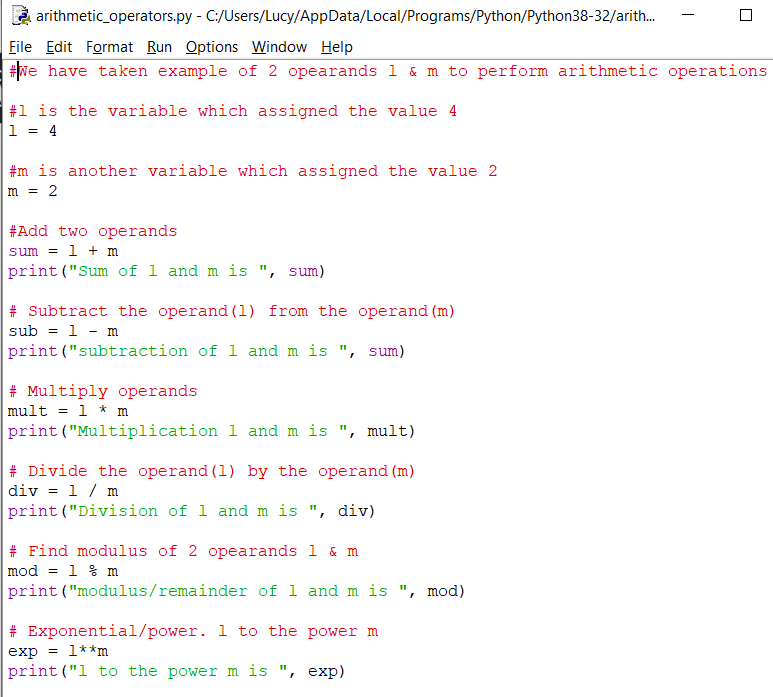In this post we are going to describe on Arithmetic Operators in Python.
Before going to Arithmetic Operators let’s know What is a Operator in Python and then we will learn what is Arithmetic Operator.
Operator in Python:
Operators are used to perform operations on Operand.
Example:
a + b = 5
Here a and b are operands and the operation is the mathematical operation which is addition of two numbers. Now Let’s discuss about Arithmetic Operators in detail.
Arithmetic Operator in Python:
Arithmetic Operators are used to perform mathematical operations such as addition, subtraction, Multiplication, Division, Modulus and exponential .
Addition Operation(+)
Adds two operands.
Example: 2 + 3
Here operator is “+” and operands are 2 & 3.
The result after Addition Operations will be “5”.
Subtractions Operation(-)
It subtracts two operands.
Example: 5 – 3
Here operator is “-” and operands are 5 & 3.
The result after Substraction Opeartions will be “2”.
Multiplication Operation(*)
It multiplies two operands.
Example: 6 * 5
Here operator is “*” and operands are 6 & 5.
The result after Multiplication operation will be “30”.
Division Operation(/)
It divides the first operand by the second.
Example : 6 / 2
Here operator is “/” and operands are 6 & 2.
The result after Division operation will be “3”.
Modulus Operation(%)
It returns the remainder when 1st operand is divided by the 2nd.
Example : 6 % 2
Here operator is “%” and operands are 6 & 2.
The result after modulus operation will be “0”.
Exponential(Power) Operation(**)
Example : 3 ** 2
3 to the power 2. t means 3 is multiplied 2 times.that is 3 * 3.
Here operator is “**” and operands are 3 & 2.
The result after exponential operation will be “9”.
Now let’s do the coding to perform the above mathematical operations.
#We have taken example of 2 operands l & m to perform arithmetic operations
#l is the variable which assigned the value 4
l = 4
#m is another variable which assigned the value 2
m = 2
#Add two operands
sum = l + m
print(“Sum of l and m is “, sum)
# Subtract the operand(l) from the operand(m)
sub = l – m
print(“subtraction of l and m is “, sum)
# Multiply operands
mult = l * m
print(“Multiplication l and m is “, mult)
# Divide the operand(l) by the operand(m)
div = l / m
print(“Division of l and m is “, div)
# Find modulus of 2 opearands l & m
mod = l % m
print(“modulus/remainder of l and m is “, mod)
# Exponential/power. l to the power m
exp = l**m
print(“l to the power m is “, exp)
In the above program the comment section which is written in # will be helpful for you as i have added the necessary details and it’s a good practice to write comments in programs.
After executing the above program the output will be as below.

I am using IDLE to write and execute the python programs. You can use any preferred editor and execute the program.
I hope this post will be helpful for you.
Happy Blogging!


Geri Newton
Right here is the right website for anybody who wishes to understand this
topic. You understand so much its almost hard to argue with you (not that I actually
would want to…HaHa). You definitely put a fresh
spin on a topic that’s been written about for a long time.
Excellent stuff, just great!